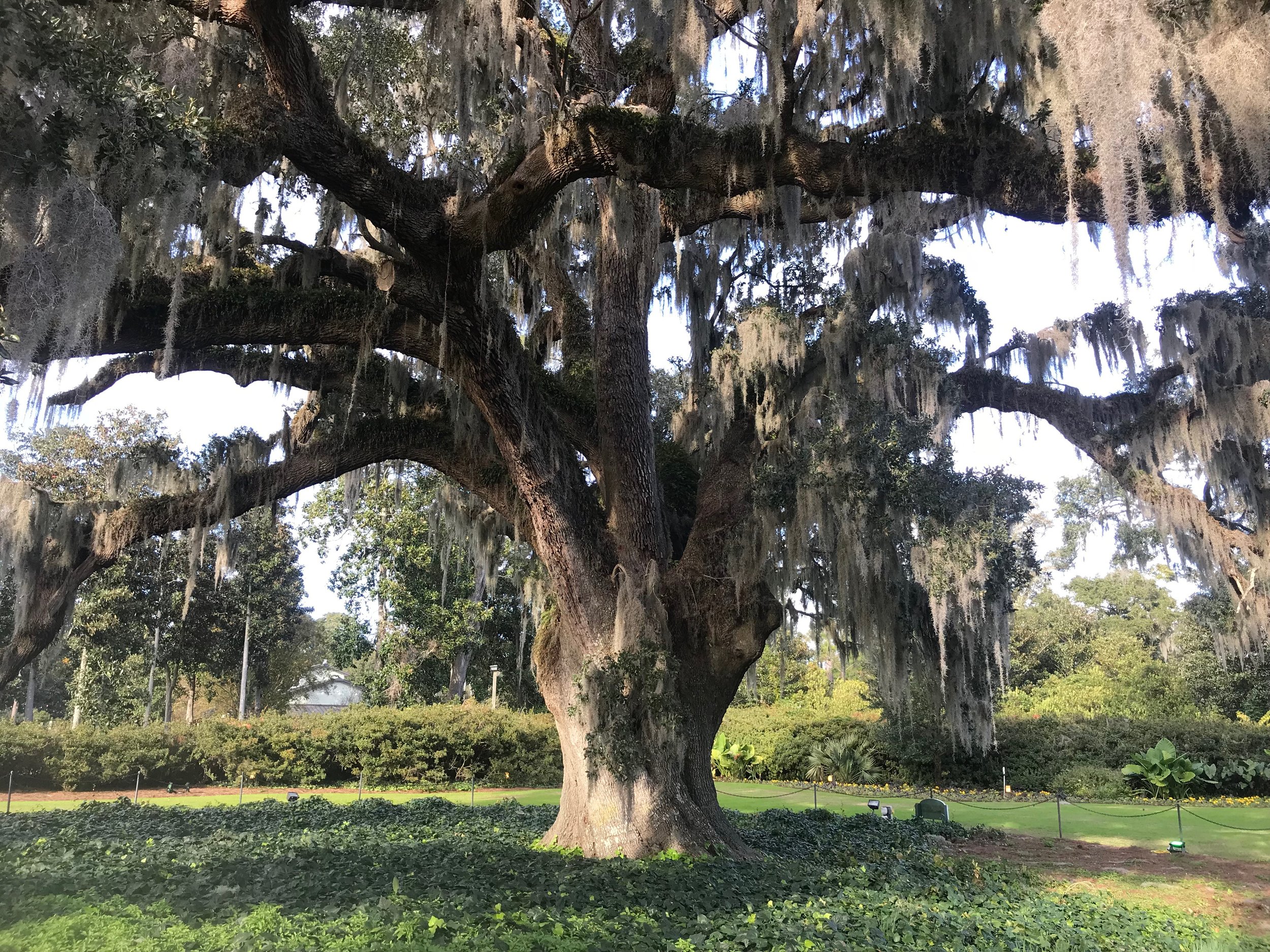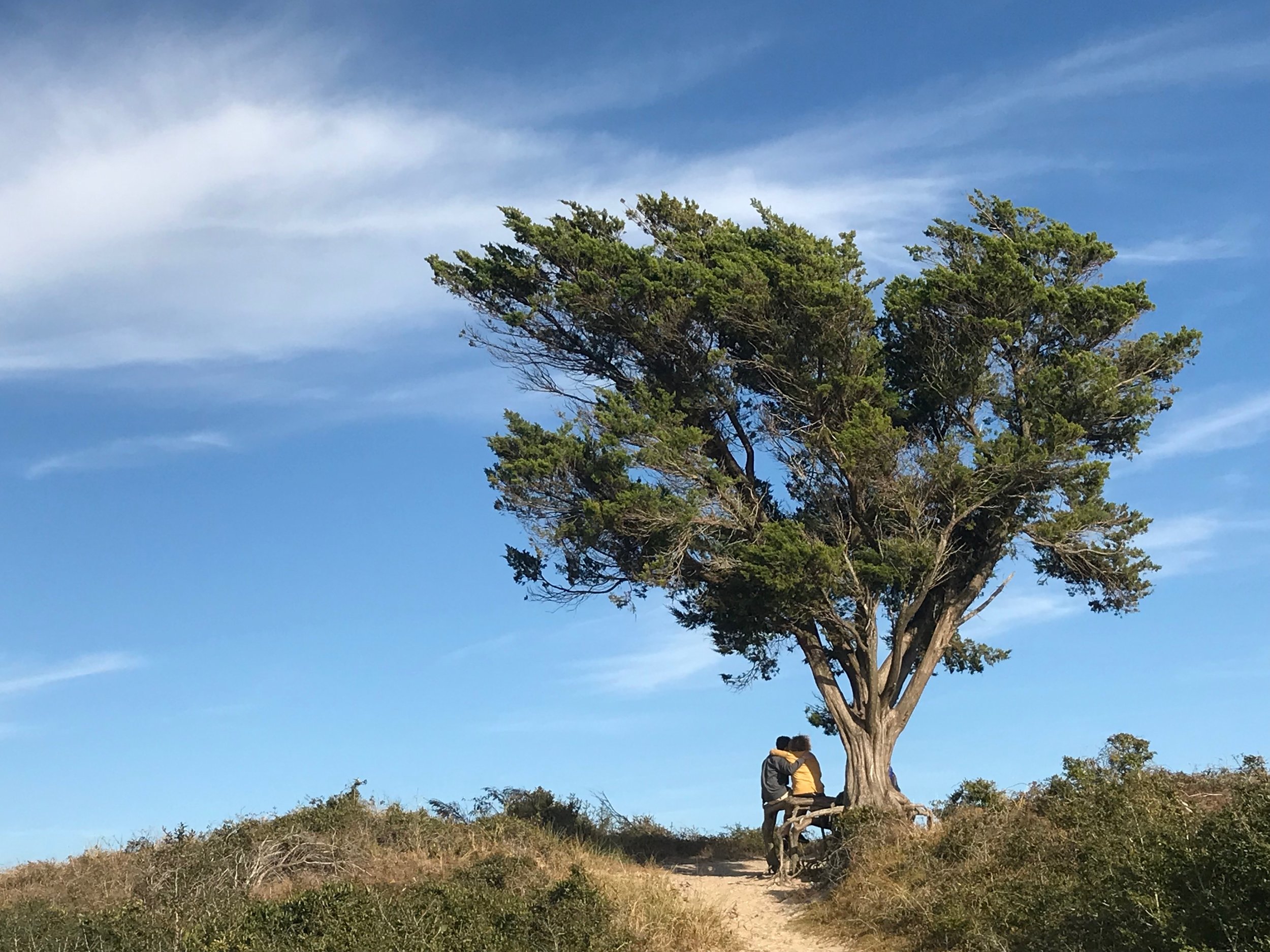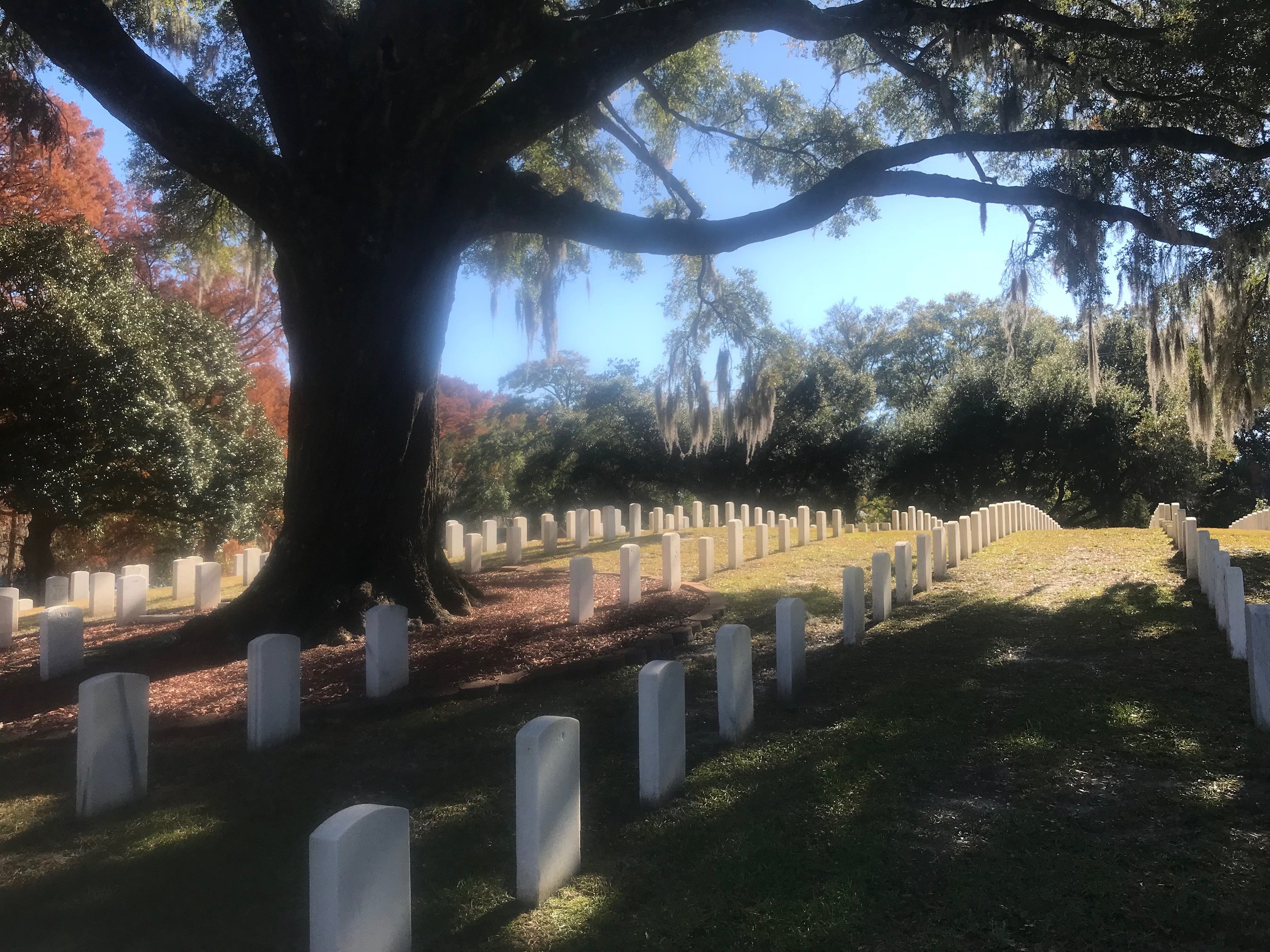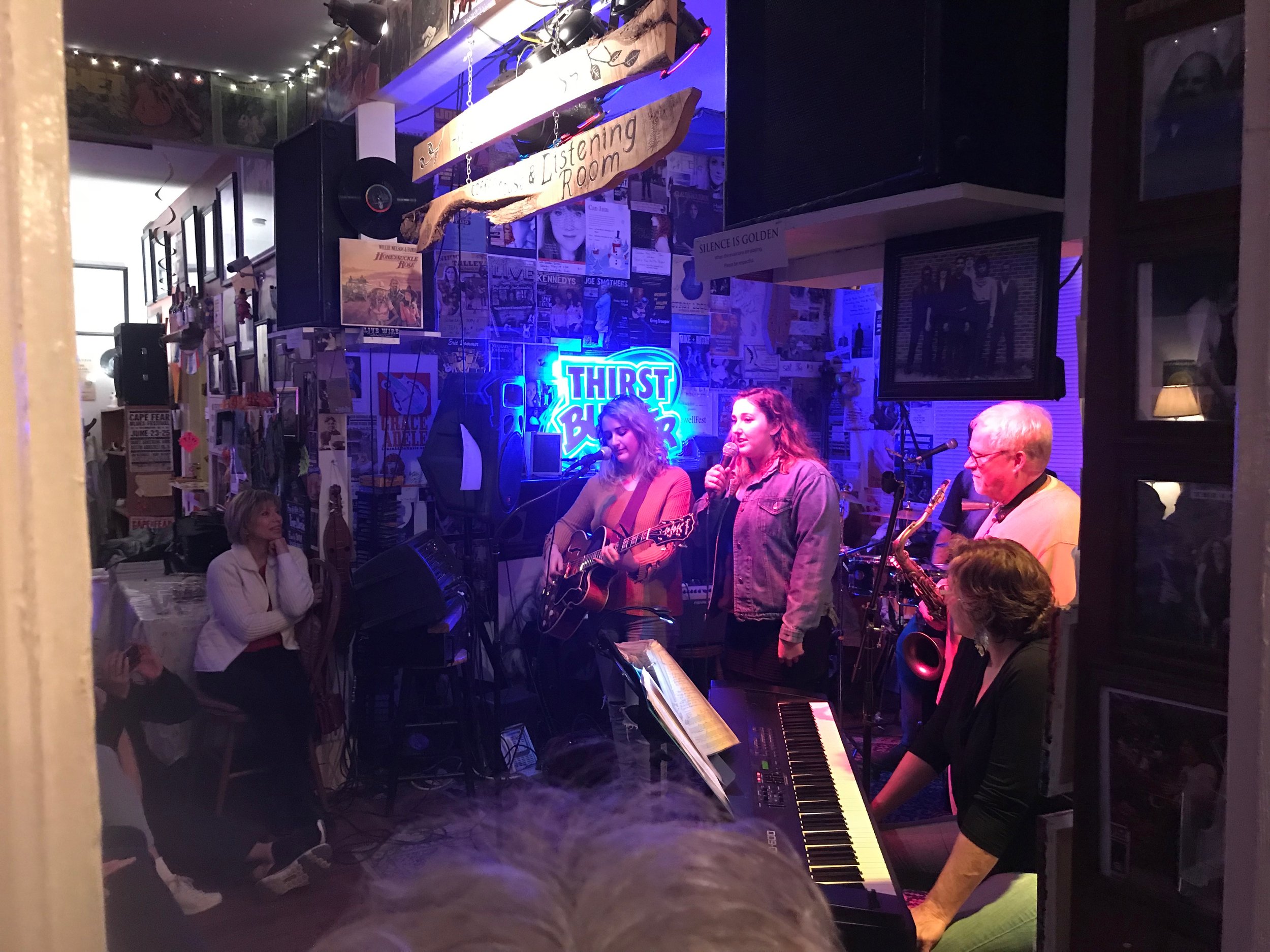Report from Cape Fear
By Rick Holmes
Dec. 6, 2017
Wilmington, NC - Cape Fear got its name, I’m told, from the treacherous, shifting sands outside the river’s mouth, part of what’s called the “graveyard of the Atlantic.” Wilmington and the region around it have been subject to shifting historical sands over the centuries as well, making it more interesting than many communities its size. But in my brief time there, I found little to fear, and a lot to like.
My wife and I enjoyed an unforgettable Thanksgiving dinner at Casey’s Buffet: Southern home cooking by the plateful, with turkey, stuffing and pumpkin pie on top. The place was packed, but everyone was smiling.
At a reader’s suggestion, we stopped by Ted’s Fun on the River, a funky place on Castle Street with live music, beer and a $3 cover charge. The coffeehouse is a family affair, as was the band, and the audience felt like family as well. I told my wife it’s like a nightclub for old farts, where you can nurse a beer all night without being expected to buy more, where the music starts early and ends early because we can’t party like we used to. I felt right at home.
I like Wilmington’s grand trees, and the respect with which they are treated. We go out of our way to visit remarkable trees, and the Airlie Oak may be the best we’ve seen. We dropped in on another sprawling live oak, in Ogden, that got in the way of a new Publix supermarket. Instead of cutting it down, the developer had the tree carefully dug up, moved 50 yards, and replanted.
I like the New Hanover County Arboretum, which we found as interesting a garden as Airlie, with no admission charge. It even offers a free house plant clinic five days a week.
What don’t I like? The suicide turning lanes in the middle of some major roadways. I passed by two crashes at the center of Market Street in two days. I’m glad to hear there are plans to replace the free-for-all turning lane with medians on at least part of that fine thoroughfare, maybe with trees.
Everyone we met was as welcoming as can be, from the barista on Front Street who went off the menu to make me a coffee shake that really tasted like coffee, to the staff at the KOA campground – but that will come as no surprise to anyone who lives here.
I visited with some old friends who moved here several years ago and love it. The living is easy down on Ocean Isle Beach, where they’ve opened a thriving business. They see a lot of “six-and-six” people: “Six months in Florida and six months here, or six months in Michigan and six months here.”
Retirees have been coming to the Carolina coast for decades, which brings challenges as well as rewards. As they get older, they spend more of their money on health care, less on everything else, my friend said. That limits opportunities for younger people, who are drawn to the more hip Wilmington, which in turn makes it hard to find good workers out in the sticks.
A relative in New England asked me to check out the area as a place to spend winters. He hears it’s progressive, pleasant and affordable. Certainly pleasant, I reply, especially compared to winter up North, and more affordable than lots of places. I hesitate to characterize its politics except to say it’s a purple corner of a purple state, meaning what happens here has national implications.
I came here in part for the history, and Wilmington has plenty: rebellious colonials, daring blockade runners, and Michael Jordan. I was drawn especially to the long-untold story of the 1898 massacre and coup, which I wrote about in my last column. Events in Wilmington’s more recent history – the fractious school integration that sparked riots in 1971 and the tainted prosecution of the “Wilmington 10” that followed – also deserve a more thorough telling. I wonder if the cover-up of the crimes of 1898 contributed to the tensions of 1971.
There’s a good story to be told about how Wilmington has grappled with its history, especially since the centennial of the 1898 events inspired community members to break the silence. Melton A. McLaurin, a now-retired University of North Carolina Wilmington professor active in the 1898 Foundation, told me the process significantly improved communications between the black and white communities.
But race relations often take a few steps forward, then fall back, McLaurin said. Schools have become more segregated over the last five to 10 years, and escalating housing prices – thanks to all those folks moving in from other parts of country – are forcing low-income people of all races out of town.
It’s also good to see a community so well-served by its local newspaper. I say this not just because the StarNews has carried my column since I hit the road last March. I’ve also watched this paper’s coverage of the GenX threat to water supplies, which is local journalism at its best. I know all too well the financial pressures facing small newspapers, and Wilmington is fortunate to have a paper that roots out facts even in the face of bureaucratic resistance, one that offers a complete news package every day, and one with a healthy opinion section where local folks can share their thoughts.
After a week in Wilmington I’m an expert on nothing other than my own first impressions. Those are positive, to be sure. But if you really want to know about a place, read the other pieces on this page, the ones written by people who aren’t just passing through.
My visit was too brief to see everything on my list. That includes Southport, which a StarNews reader told me is a community were people of all backgrounds get along. Another tipped me to the story of the John N. Smith Cemetery, the final resting place for hundreds of black Southport residents, which is being restored through a communitywide volunteer effort.
Some stories will just have to wait for my next visit.
This was written mostly for readers of the Wilmington StarNews. Rick Holmes can be reached at rick@rickholmes.net. You can follow his journey at www.rickholmes.net. Like him on Facebook at Holmes & Co, on follow him on Twitter @HolmesAndCo





